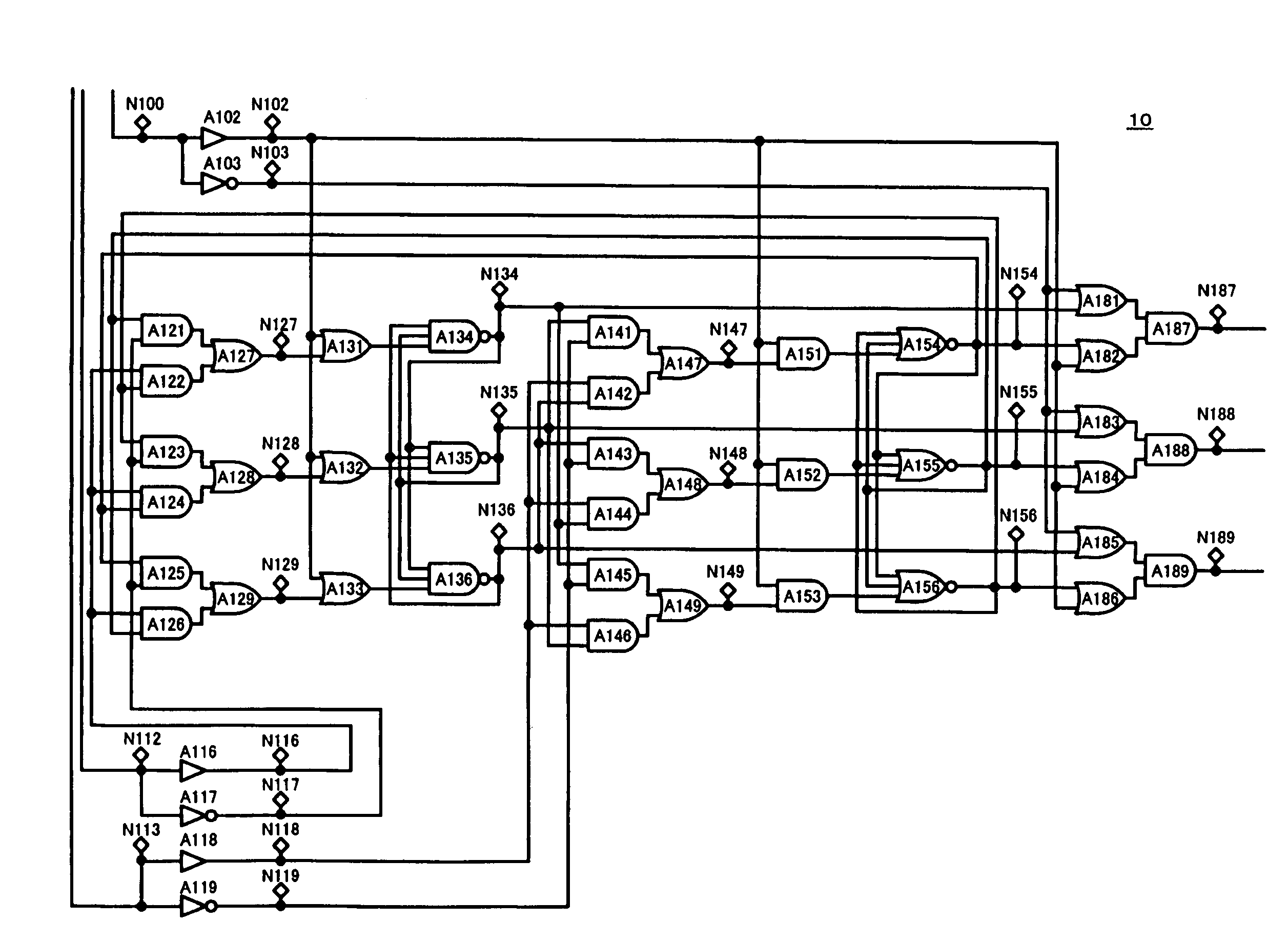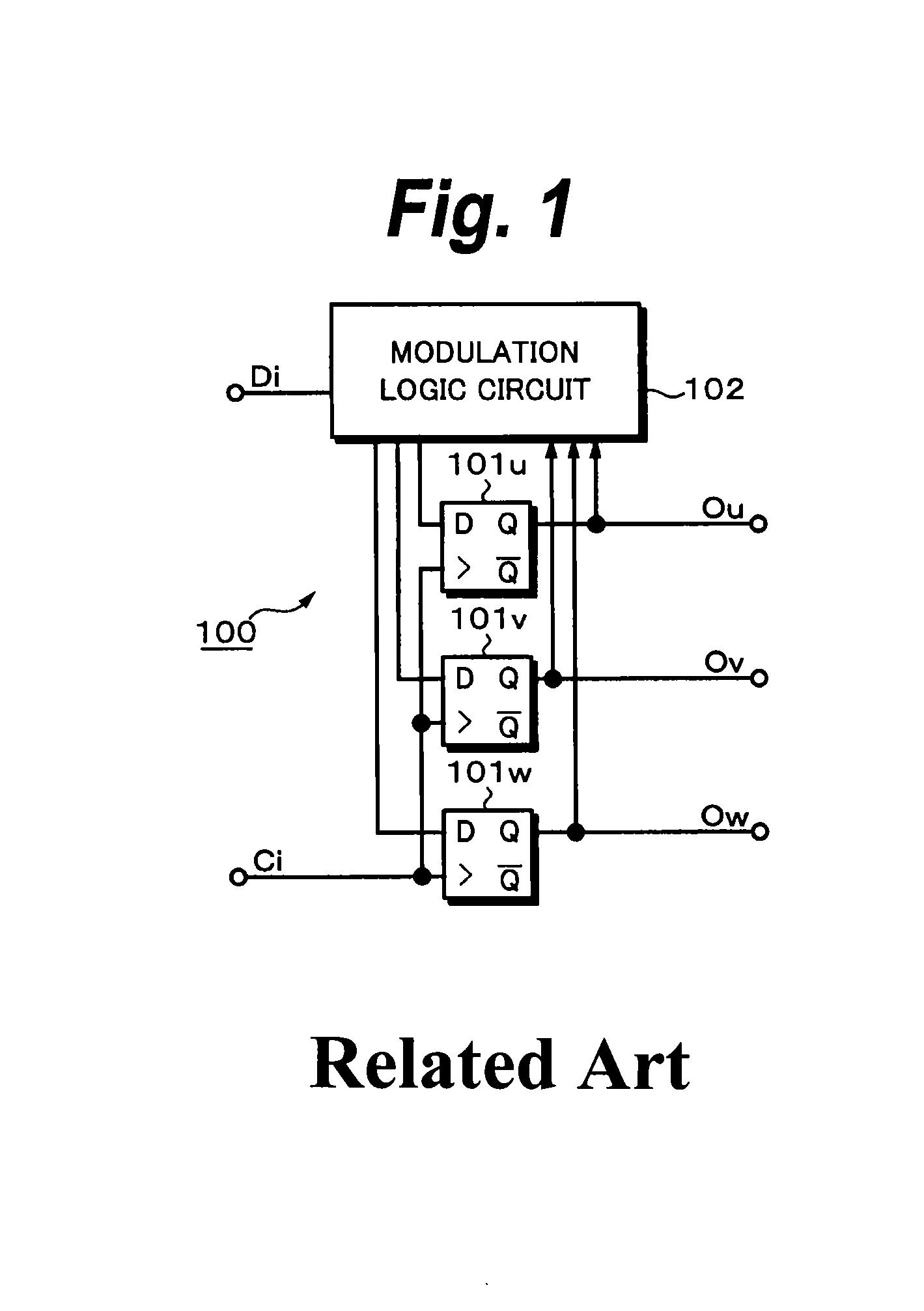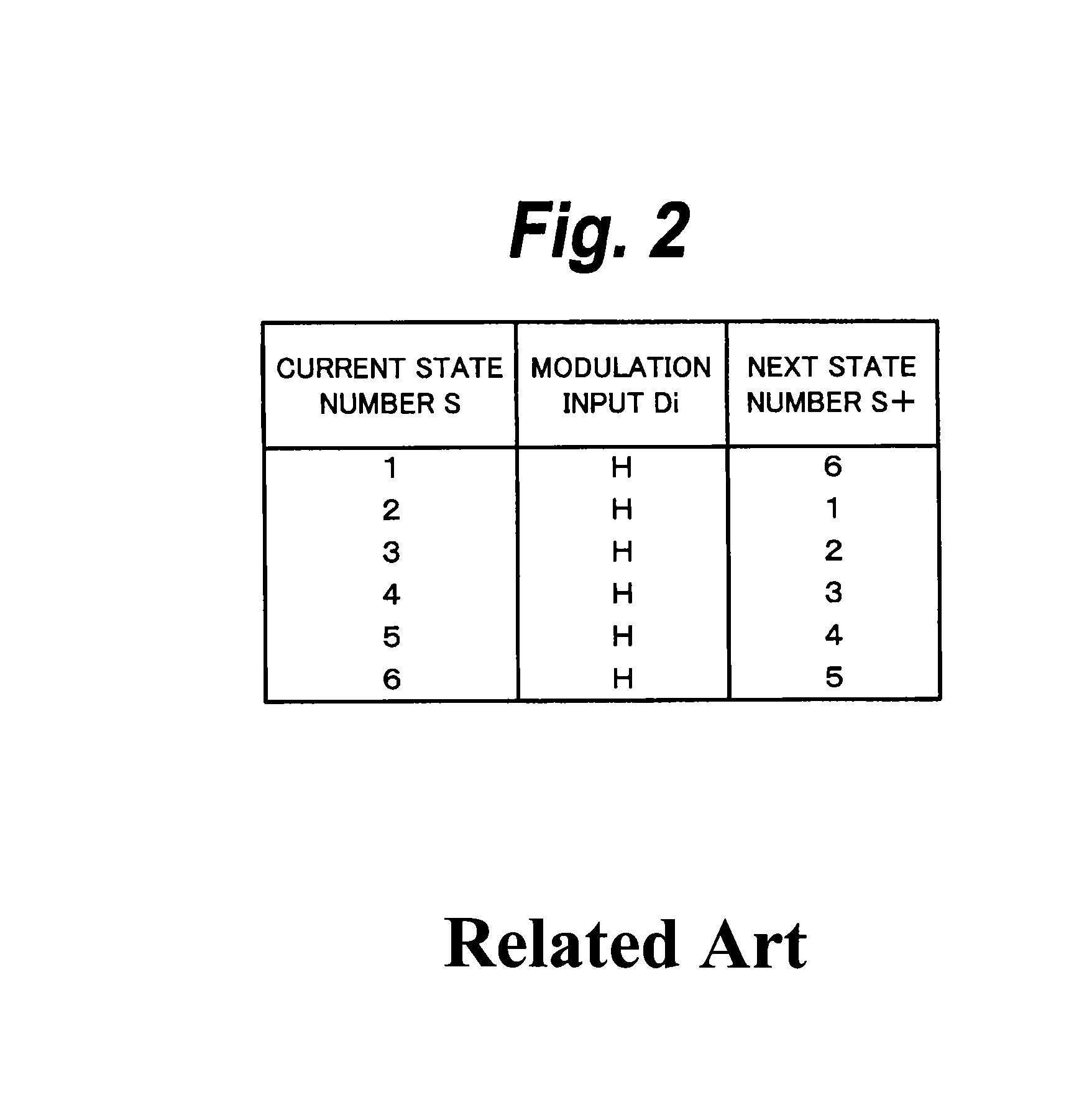Encoder apparatus and decoder apparatus
a decoder and encoder technology, applied in the direction of digital transmission, synchronous/start-stop systems, digital transmission, etc., can solve the problem that the logic circuit and latches of the encoder apparatus cannot be fully used for their upper limits of operation frequency, the transmission band of data cannot be freely selected, and the clock frequency of the encoded output signal is limited. achieve the effect of higher data transfer rates of the internal bus
- Summary
- Abstract
- Description
- Claims
- Application Information
AI Technical Summary
Benefits of technology
Problems solved by technology
Method used
Image
Examples
first embodiment
2-2. Modification of First Embodiment of Present Invention
[0146]Next, a modification of the first embodiment of the present invention will be described. This modification is an example of which another simulation model is used in the encoder 10 of the first embodiment of the present invention. FIG. 15 shows an outline of the other simulation model according to the modification of the first embodiment of the present invention. The structural elements of the other simulation model are the same as those of the simulation model shown in FIG. 8. An encoder of the modification of the first embodiment is the same as that shown in FIG. 11. In the other simulation model shown in FIG. 15, in a test unit 500, a data output N090 from which one-bit pseudo random numbers are extracted is connected to data inputs N112 and N113 of the encoder 10 in common. The data output N090 is output at timing pseudo random numbers are sampled at positive and negative edges of the clock N080.
[0147]FIG. 16 is a t...
second embodiment
3-2. Modification of Second Embodiment of Present Invention
[0194]Next, a modification of the second embodiment of the present invention will be described. FIG. 23 shows an outline of a simulation model used to verify the operation of the encoder 11 according to a modification of the second embodiment of the present invention. A test unit 502 generates clock signals N081 and N082 whose phases are different by 90 degrees to operate an encoder 11. In addition, the test unit 502 generates data signals N092 and N093 corresponding to pseudo random numbers. At this point, the test unit 502 outputs values of pseudo random numbers at timing of which the data signal N092 is sampled at both positive and negative edges of the clock signal N082 and the data signal N093 is sampled at both positive and negative edges of the clock signal N083.
[0195]According to the modification of the second embodiment of the present invention, the encoder 11 inputs a data signal N092 of four-phase data inputs from...
third embodiment
4-4. Supplement of Third Embodiment of Present Invention
[0284]According to the third embodiment, the first modification of the third embodiment, and the second modification of the third embodiment, in the first and second data hold circuits, NAND type data hold circuits are used. Instead of NAND type data hold circuits, NOR type circuits may be used. In this case, when logics of inputs and outputs are inverted, the same operation as the NAND type data hold circuits may be performed:
[0285]The same operation as the first data hold circuit may be performed when a positive logic encode input is connected to an NAND type data hold circuit, a negative logic encode input is connected to an NOR type data hold circuit, and a data hold output is a differential output. Likewise, the same operation as the second data hold circuit may be performed when a negative logic encode input is connected to an AND type data hold circuit, a negative type encode input is connected to an NOR type data hold c...
PUM
 Login to View More
Login to View More Abstract
Description
Claims
Application Information
 Login to View More
Login to View More - R&D
- Intellectual Property
- Life Sciences
- Materials
- Tech Scout
- Unparalleled Data Quality
- Higher Quality Content
- 60% Fewer Hallucinations
Browse by: Latest US Patents, China's latest patents, Technical Efficacy Thesaurus, Application Domain, Technology Topic, Popular Technical Reports.
© 2025 PatSnap. All rights reserved.Legal|Privacy policy|Modern Slavery Act Transparency Statement|Sitemap|About US| Contact US: help@patsnap.com



